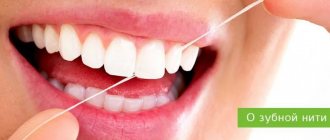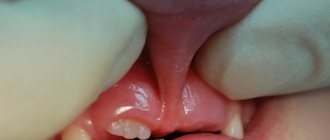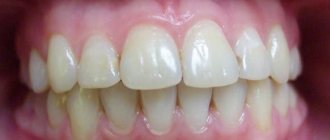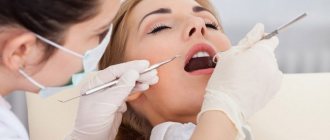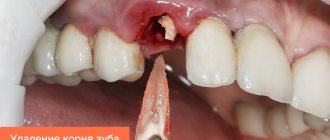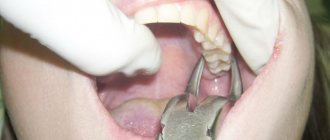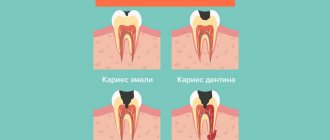A negative attitude and even a panicky fear of dental treatment is most often associated with the “drilling” procedure with a drill. It is the sound of this special device that scares patients away from the dentist’s office and leads to advanced cases and tooth loss. Science does not stand still, and now patients have the opportunity to treat caries without drilling teeth.
Treatment of caries without drilling teeth
How is dental treatment performed without a drill?
Patients in modern dental offices are increasingly less likely to hear the sound of a working drill. Dentists were able to stop drilling teeth thanks to the introduction of the latest techniques for treating carious surfaces.
The benefits of not having your teeth drilled are obvious. A comparison of traditional and new methods shows the clear superiority of treatment without a drill:
| Traditional methods | Techniques without drilling teeth |
| Touching the healthy part of the tooth when drilling, causing microcracks in the enamel | Removal of damaged areas without affecting the enamel on undamaged parts of the tooth |
| Painful process. The need for anesthesia | Painless procedures. Carrying out manipulations without anesthesia |
| Duration of the procedure. Creating discomfort with the sound of a drill | Fast completion of the procedure. The patient stays in a comfortable psychological environment |
| Risk of overheating of the pulp due to increased temperature in the area of operation of the bur | No risk of pulp overheating due to the non-contact procedure |
Important! Treatment without drilling teeth is an opportunity to maintain oral health without experiencing pain and fear.
Video - Treatment of caries without a drill
Infiltration method
The procedure is carried out using Icon technology (infiltration concept). The authors of the method are the German company DMG. Icon is a minimally invasive treatment method that involves filling the affected area with a polymer mixture.
This technique is based on the use of a special chemical substance, which is used to influence the area of enamel affected by caries. The carious lesion on the molar is covered with gel, the damaged enamel is split from it. Upon completion of the splitting process, the gel is washed off with alcohol. The area cleared of damaged enamel is dried. A special resin with a polymer composition is applied to it. It fills the micropores of the tooth enamel and becomes one with it. At the end of the procedure, the infiltrate is dried using a polymerization lamp.
Dental treatment using Icon technology
The procedure allows you to preserve the integrity of the enamel for a long time. The material that fills the damaged area is much stronger than natural enamel, so microcracks do not form on the tooth for a long time, leading to the development of new foci of caries. Polymerization allows you to choose a color that completely matches the natural enamel of the tooth.
The duration of the treatment procedure is about 20-25 minutes. Without pain, discomfort, or overheating of the tooth, the carious plane is completely removed. One visit to the doctor makes it possible to remove caries lesions on all teeth at once.
Indications for use of the technique:
- Laser treatment of dental caries - how effective, safe and painless is the procedure?
- Removing chalk stains on enamel after removing braces. While wearing orthodontic structures in the area where they adhere to the tooth, the enamel is destroyed. Filling the damaged areas with a polymerizing composition stops further destruction of the enamel in these areas.
- Caries at the beginning of the development of the disease, if the destruction of the enamel is in the staining stage, infiltration allows you to preserve the enamel without destroying the tooth tissue.
- Location of caries in hard-to-reach places. When stains appear in the interdental spaces, it does not allow you to act on them with a drill without destroying the enamel on two adjacent teeth at once. The gel easily penetrates the interdental space and removes stains.
- Treatment of children. This method allows you to eliminate the fear of visiting a doctor.
Removing caries using Icon technology
Contraindications to the use of infiltration:
- age up to 3 years;
- caries in later stages.
This technology has earned a lot of positive feedback from patients and dentists. Some negative patient reviews are associated with violation of the procedure technology by an unqualified specialist. The cost of treatment for one tooth starts from 4,000 rubles.
Important! Correctly performed treatment in extremely rare cases leads to the continuation of the process of tooth destruction, which is associated with the individual characteristics of the enamel structure.
Before and after infiltration
Drill
Dentists twisted the first burs by hand (you can read about this in the article “History of Dental Treatment”). Then - with your feet. Then they entrusted this matter to electricity.
Nowadays, burs are rotated by compressed air, and it is pumped by an electric compressor.
No matter what modern drill is - with great speed and low vibration, with cooling - the tooth still heats up from the drill. This is why drilling is painful, and it is most often done with an anesthetic injection.
Sometimes patients say: there was a small hole, but when they drilled it out, it became huge. But this is not because the doctor is crooked. The thing is that tooth enamel is the hardest tissue of the body and is destroyed more slowly than the dentin that lies underneath it. The hole can actually be huge, but only a small dot is visible on the enamel, or nothing at all is visible if the caries is interdental .
In addition, there are rules for boron preparation. The doctor cannot remove less than required - the filling will fall out, or secondary caries .
Fear of the dentist is most often fear of the drill. There are people who are so afraid of it that they try to cure tooth decay themselves. They bite the rest of their teeth into the Internet and look for magical folk recipes there.
I have two news for them - bad and good. The bad: no matter what all sorts of “experts” say, it is impossible to cure caries without a dentist. Good: without a drill ! Read about it below.
Ozone treatment
The technology is based on non-contact exposure to ozone on the carious surface. This gas is formed when UV rays and electrical discharges combine. The resulting substance has sterilizing properties due to the instability of the OZ molecule.
Damaged tissue is removed contactlessly. When exposed to triatomic oxygen, the carious lesion is disinfected. The technique was first used by doctors from Germany. They used a machine that converted oxygen into ozone.
The process of treating a tooth with ozone
The stages of impact on the carious plane are as follows:
- A cap is placed on the tooth and connected to the HealOzone ozone therapy device.
- An environment close to a vacuum is formed inside the closed zone.
- After turning on the device, ozone is formed inside the cap, which begins to actively influence the microflora within 35-40 seconds. All microorganisms existing on the tooth die during this time.
- After disinfecting the carious area, the surface is covered with a special composition.
Indications for use in caries ozonation are as follows:
- Inflammatory processes in the gums.
- Diseases of the oral mucosa.
- Carious inflammation of root canals.
- Initial stages of caries.
- Fungal infections of the enamel.
- Difficulty in teething.
Ozone therapy drug HealOzone
The ozone therapy device is effective at the beginning of the destruction of enamel by carious bacteria. Ozone affects viruses and bacteria. Healthy cells are not destroyed during this time. The technique allows you to stop inflammation, activate the patient’s immunity and trigger regeneration processes.
The technique is considered the best option for treating childhood caries. Ozonation does not cause pain in the child, since the manipulations are absolutely painless. This method helps protect all of the child’s primary incisors from further destruction.
Ozone is hypoallergenic, so no negative reactions occur on the part of the patient’s body during or after the procedure. The procedure is painless and safe. Done in a short time.
- How to clean teeth from caries
The price for ozone treatment is from 1000 to 3000 rubles per tooth. Patients respond positively to the use of the technique in the initial stages of enamel destruction.
Before and after ozone therapy
Reference! With deep tissue damage, it is sometimes necessary to re-treat with drilling.
Laser treatment
The impact on carious lesions is carried out using a laser beam that dissects hard tissue. The doctor selects the length of the laser beam to ensure the evaporation of carious areas. Healthy tissues are not affected. The laser wave stops the growth and reproduction of pathogenic microflora on the diseased tooth and in the oral cavity.
The technique is completely non-contact and therefore painless. After removing the damaged areas, the risk of further development of caries under the installed filling is minimal.
Important! Under the influence of a laser beam, the tooth does not vibrate, which eliminates the possibility of additional cracks and chips in the enamel.
Laser dental treatment
Dental practice involves several options for exposure:
- Contact. Tight fit of the emitter for deep penetration into tooth tissue. It is used for the treatment of pathological lesions, photophoresis and treatment of alveolar sockets.
- Contactless. Based on remote surface processing. The gap between the device and the tooth is about 8 centimeters. Used to relieve swelling, relieve pain, and external irradiation of carious lesions.
- Stable. Used if the pathological field does not exceed 1 cm.
- Labile. It is used for large areas of tooth enamel destruction. Based on point irradiation with movement at a speed of 1 cm/sec. according to the affected area.
Indications for laser use:
- caries;
- granuloma;
- periodontal disease;
- enamel whitening;
- treatment of tooth sensitivity;
- processing for prosthetics;
- correction of dental defects.
Laser operation system for dental treatment
The technique has a wide range of contraindications:
- Nervous diseases.
- Kidney diseases.
- Diabetes.
- Bleeding in the mouth.
- Severe damage to the heart and blood vessels.
- Hyperthyroidism.
- Tuberculosis.
- Pregnancy up to 8 weeks.
- Photodermatoses.
The caries treatment procedure consists of the following steps:
- Removing plaque from a tooth.
- Preparation of a carious canal with a laser beam.
- Sealing the canals.
- treatment of the treated surface with an adhesive solution.
- Installation of a seal.
- Crown modeling.
Laser dental treatment process
Reference! The cost of treating superficial caries using a laser ranges from 800 to 3000 rubles. Removal of deep lesions from 1000 to 10,000 rubles.
Sandblasting machine
There are several devices that allow you to remove caries with sand: Aquacut Quattro and AquaCare (UK), Sandman (Denmark), RONDOflex plus 360 (Germany).
Device for cleaning and preparing teeth Aquacut Quattro
They are also called kinetic or hydrokinetic. Of course, they do not use river or sea sand, but a special abrasive. In some machines it is poured from a large can, in others the abrasive is packaged in cartridges. These same devices, only with a different type of abrasive, can be used for professional teeth cleaning.
In order to more clearly explain the advantages of such devices, we need to go a little away from the topic.
Dentists, if possible, try to save the tooth pulp (nerve). When it is alive, the tooth receives with its help substances that maintain it in normal condition. If the pulp is removed, it darkens, becomes brittle and can collapse even from a small load. In addition, neither a granuloma nor a cyst will ever grow on the root of a living tooth, due to which you can lose the tooth.
Pulp is removed in several cases:
1. If this is necessary for prosthetics.
2. If the tooth has chipped down to the pulp due to injury. Most often this occurs due to impacts or stones in the food, but sometimes for more exotic reasons. For example, I know a man whose tooth was “shot off” with a traumatic pistol. As Vasily Alibabaevich said in the film “Gentlemen of Fortune”: “Why are you so angry? Why, like a dog?
3. The tooth did not break off, but due to a strong blow, the pulp became inflamed or died (pulpitis or periodontitis).
4. Caries (now called complicated) reached the pulp, it became inflamed and the tooth became sick (pulpitis). Or the inflammation has spread beyond the tooth – periodontitis.
5. Caries has almost reached her. In this case, due to heating of the tooth during treatment, there may be pulpitis. There is no fault of the doctor here - he just should have contacted earlier.
Inflammation of the dental pulp - pulpitis
Periodontitis
When deep caries is removed with sand, the probability of pulpitis is, of course, not zero, but it is much lower than when working with a drill, because the tooth does not heat up during preparation. And if they work with initial or intermediate caries, then it also doesn’t hurt. Pain relief is almost never needed with this method of work.
I heard from doctors who were “told by other doctors” that this is all nonsense and only superficial caries can be treated with sand. I know for sure that neither one nor the other even tried to work using this method. Because for ten years, three meters from my workplace, the Aquacut Quattro device was used to clean teeth and treat all types of caries. Personally, I was treated for deep caries (it happens - dentists are people too) without pain relief.
There are no special contraindications to this treatment. Unless you need to treat small children and asthmatics with caution - collect flying sand with a saliva ejector and a vacuum cleaner.
And if everything is so great, why don’t all clinics have such devices? So I’m surprised. I suspect that it has to do with two things – the conservatism of doctors and the cost of consumables.
